The 2025 exhibitions to feature women artists of the 1800s and the Vienna of the early 1900s
In 2025, the Ateneum Art Museum will present two temporary exhibitions. From 7 March to 24 August 2025, Crossing Borders will, for the first time, bring together in one exhibition the work of travelling women artists from the 1800s. To be shown from 26 September 2025 to 1 February 2026, Gallen-Kallela, Klimt & Wien will explore how Akseli Gallen-Kallela’s art developed in interaction with international modernists, such as Gustav Klimt and Koloman Moser. Also on show will be the collection exhibition A Question of Time. The Gothic Modern exhibition, currently on display, will run until January 26, 2025.
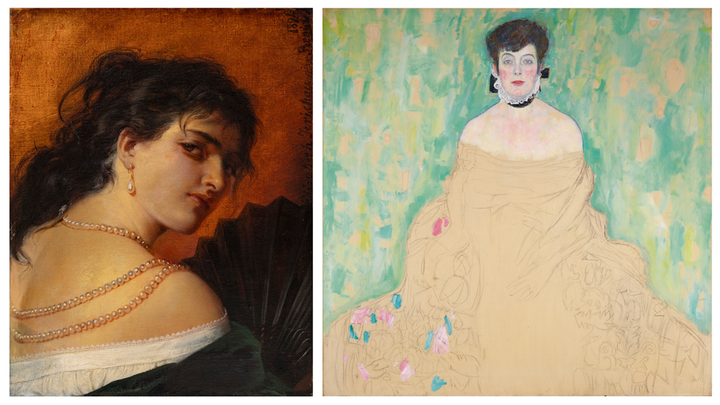
Crossing Borders changes our understanding of the lives of women artists in the 1800s
Crossing Borders – Travelling Women Artists in the 1800s
7 March–24 August 2025
To get a better education, artists in the 1800s had to travel abroad, to cities such as Düsseldorf, Dresden, Munich, and Berlin in Germany. Women were only allowed to study as private students of male artists or in art schools men had established for women.
Travel was slow and sometimes dangerous, and it required special arrangements, as women were not allowed to travel alone. Travelling also influenced the subjects of the works: instead of landscapes, the more suitable subjects for women were flowers, still lifes and portraits. In accordance with the fashion of the time, women wore crinolines, so painting was easier indoors than outdoors in nature.
The artists featured in Crossing Borders worked at a time when women did not yet have the right to vote. Women had to choose between a career and a family: when they got married, they usually had to stop working as artists. Many of the courageous artists featured in the exhibition were role models for later women artists such as Helene Schjerfbeck and Ellen Thesleff.
An art-historically significant exhibition highlights previously completely unknown artists and their networks, and puts on display works never before seen in Finland. The exhibition continues the Ateneum’s work as a pioneer in research related to women artists, and it is curated by the Ateneum curator Anne-Maria Pennonen. It highlights the importance of Germany as an art nation and a travel destination over France, which has been studied much more.
All the artists of Crossing Borders from the Nordic countries, the Baltic countries, Germany and Poland studied and worked in Germany in the 1800s. The Finnish artists featured in the exhibition include Fanny Churberg, Alexandra Frosterus-Såltin, Ida Silfverberg and Victoria Åberg, while foreign artists include Jeanna Bauck, Mathilde Bonnevie-Dietrichson, Marie Ellenrieder, Julie Hagen-Schwarz, Elisabeth Jerichau-Baumann, Magda Kröner, Amalia Lindegren, Emmy Lischke and Bertha Wegmann. The exhibition also features drawings by Finland’s first female scientific illustrator, Hilda Olson, from the collection of the Finnish Museum of Natural History. In all, the exhibits include paintings, sculptures and drawings by more than 50 artists, all of whom are women.
The partner of the international exhibition and one of the lenders of the artworks is the Kunstpalast in Düsseldorf, which will stage a second version of the exhibition in the autumn of 2025, after the showing at the Ateneum. There is a wide representation of exhibits from the Finnish National Gallery collection, and works are also on loan from, for example, the Alte Nationalgalerie (Germany), the Nationalmuseum (Sweden), the Gothenburg Museum of Art, the National Museum (Norway), the Ny Carlsberg Glyptotek (Denmark) and the National Gallery of Denmark, and the Art Museum of Estonia.
The exhibition is complemented by the publication of an exhibition catalogue in Finnish, Swedish and English. The editors-in-chief of the publication are Anne-Maria Pennonen and Hanne Selkokari. The publication features a total of 18 articles by international researchers.
Akseli Gallen-Kallela and the Secessionists met in early 20th-century Vienna: an exhibition to bring Gustav Klimt’s paintings to Finland for the first time
Gallen-Kallela, Klimt & Wien
26 September 2025–1 February 2026
The young artists of the late 19th and early 20th centuries wanted to make a radical break away from old art ideals and move towards a new, freer conception of art. The most famous example of such a departure is the Vienna Secession, which was founded in 1897 under the direction of Gustav Klimt.
The Gallen-Kallela, Klimt & Wien exhibition is about the Secessionists with whom Akseli Gallen-Kallela collaborated and in whose exhibitions he participated. The pulsating art scene of 20th-century Vienna and the integration of various international influences in the form of ideas and styles are highlighted in this exhibition, which features both modern art and modern design. At the same time, the exhibition marks the first showing of Klimt’s paintings in Finland.
The main goal of the Secessionists was the equality of all art forms. Visual art, architecture, crafts, design and fashion were to represent a changed and modern world. The Secessionists were united by the development of a new identity and way of life, as well as an interest in monumentalism and the depiction of beauty. Secessionism was not a unified art movement, but it rather incorporated a broad array of styles, such as art nouveau, symbolism and impressionism. Women could not become official members of the Vienna Secession, but they participated in exhibitions and played a significant role as reformists.
Akseli Gallen-Kallela focused on Finnish subject matter, but he developed his expression in close interaction with international modernists. One of these was Koloman Moser, who shared Gallen-Kallela’s interest in ‘total work of art’ (Gesamtkunstwerk) and the idea of equality between different art forms. Gallen-Kallela worked in Central Europe from 1895 to 1908, and participated in exhibitions presenting works by Secession groups in several cities in Germany, and twice in Vienna, in 1901 and 1904.
In addition to visual art, the exhibition includes photography and plenty of design: everyday objects, jewellery and fashion, such as a reform dress by the fashion designer Emilie Flöge. The new shape of the reform dress freed women from the ideal of the wasp waist and the tightness of corsets. Flöge (1874–1952) was an Austrian fashion designer and businesswoman, and the life companion of Gustav Klimt.
The exhibition features works, for example, by the following artists and designers: Emilie Flöge, Akseli Gallen-Kallela, Ferdinand Hodler, Josef Hoffmann, Gustav Klimt, Broncia Koller-Pinell, Max Kurzweil, Elena Luksch-Makowsky, Koloman Moser, and Edvard Munch.
The Gallen-Kallela, Klimt & Wien exhibition is organised in collaboration with the Belvedere Museum, Vienna. The exhibition is curated by the chief curator at the Ateneum, Anu Utriainen. Arnika Groenewald-Schmidt, PhD (Belvedere Museum) has served as advisor on the project. The exhibition catalogue is published in Finnish, Swedish and English.
You can buy advance tickets on the Ateneum website
If you want to guarantee your admission to the Ateneum at a specific time, we recommend buying an advance ticket. Tickets can also be booked with a Museum Card and various annual passes, with no additional fees. Tickets are also sold at the door.Read more about buying tickets
Opening hours and admission fees in 2025
The opening hours of the Ateneum Art Museum will change from Monday 27 January 2025.
From 27 January to 30 June 2025 and from 1 September to 31 December 2025, the museum will be open as follows:
Mon closed | Tue–Wed 10–18 | Thu 10–20 | Fri 10–18 | Sat–Sun 10–17
In July and August, the museum will also be open on Mondays. From 1 July to 31 August 2025, the museum will be open as follows:
Mon 11–17 | Tue–Wed 10–18 | Thu 10–20 | Fri 10–18 | Sat–Sun 10–17 |
Admission fees will remain the same.
Standard ticket at the ticket office €22 | Standard ticket online €20 | Concession ticket €12 | 18–24-year-olds €12 | Under 18-year-olds free of charge | Free admission with a Museum Card
Keywords
Contacts
Reetta HaarajokiCommunications Officer
Tel:+358 50 4766 290reetta.haarajoki@ateneum.fiAnna KariCommunications Manager
Tel:+358 40 717 8185anna.kari@ateneum.fiImages
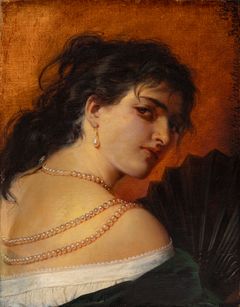
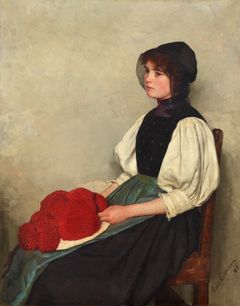
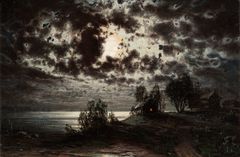
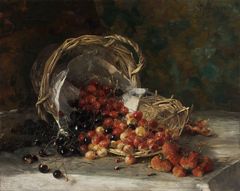
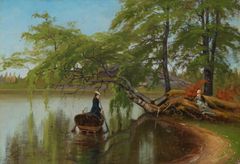

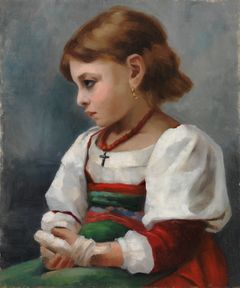
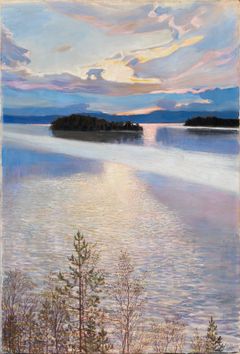
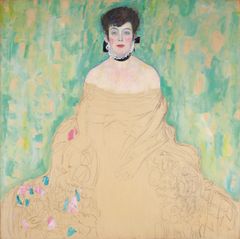

Links
The Finnish National Gallery is the national museum of fine arts. It operates three of Finland’s best-known museums: the Ateneum Art Museum, the Museum of Contemporary Art Kiasma and the Sinebrychoff Art Museum. It also manages the national art collection and its archives, develops Finnish cultural heritage and promotes art to the wider public.
Alternative languages
Subscribe to releases from Ateneumin taidemuseo / Konstmuseet Ateneum / Ateneum Art Museum
Subscribe to all the latest releases from Ateneumin taidemuseo / Konstmuseet Ateneum / Ateneum Art Museum by registering your e-mail address below. You can unsubscribe at any time.
Latest releases from Ateneumin taidemuseo / Konstmuseet Ateneum / Ateneum Art Museum
Helene Schjerfbeck-utställning visas på The Metropolitan Museum of Art i New York2.4.2025 07:40:00 EEST | Pressmeddelande
En utställning med verk av en av Finlands mest kända konstnärer, Helene Schjerfbeck, kommer att visas på det prestigefyllda museet The Metropolitan Museum of Art (The Met) i New York 5.12.2025–5.4.2026. Det är första gången en finsk konstnär får en utställning på The Met, som är ett av de mest betydande museerna i världen. Utställningen är resultat av Ateneums långsiktiga arbete och en del av projektet Klassikerna ut i världen som för ut den finska konsten i världen med stöd av Jane och Aatos Erkkos stiftelse.
Helene Schjerfbeck -näyttely The Metropolitan Museum of Artiin New Yorkiin2.4.2025 07:40:00 EEST | Tiedote
Suomen tunnetuimpiin taiteilijoihin kuuluvan Helene Schjerfbeckin teosten näyttely nähdään arvostetussa New Yorkin The Metropolitan Museum of Artissa (The Met) 5.12.2025–5.4.2026. Tämä on ensimmäinen kerta, kun suomalainen taiteilija saa näyttelyn The Metiin, joka on yksi maailman merkittävimmistä taidemuseoista. Näyttely on Ateneumin pitkäjänteisen työn tulos ja osa Klassikot maailmalle -hanketta, joka vie taidetta ulkomaille Jane ja Aatos Erkon säätiön tuella.
Helene Schjerfbeck exhibition to be shown at The Metropolitan Museum of Art in New York2.4.2025 07:40:00 EEST | Press release
An exhibition of works by one of Finland’s most famous artists, Helene Schjerfbeck, will be presented at the prestigious Metropolitan Museum of Art (The Met) in New York from 5 December 2025 to 5 April 2026. This is the first time that a Finnish artist has landed an exhibition at The Met, one of the most significant art museums in the world. The exhibition is the result of long-term work by the Ateneum and part of the Klassikot maailmalle (“Taking Finnish classics abroad”) project, which takes Finnish visual art abroad with the support of the Jane and Aatos Erkko Foundation.
Välkommen till presskonferensen för utställningen Gränsöverskridare onsdagen den 5 mars 2025 kl. 10.15.18.2.2025 10:00:00 EET | Pressmeddelande
Presskonferensen för utställningen hålls onsdagen den 5 mars 2025 kl. 10.15 både på Ateneum och på nätet – noggrannare information nedan. Gränsöverskridare samlar för första gången 1800-talets resande kvinnliga konstnärers arbeten 7.3–24.8.2025. Då konstnärerna på Gränsöverskridare var verksamma hade kvinnor ännu inte rösträtt. Kvinnor tvingades ofta välja mellan karriär och familj: i och med äktenskap blev de ofta tvungna att sluta med sitt arbete som konstnär. Många av de modiga konstnärerna på utställningen har varit förebilder för kvinnliga konstnärer som levde senare, såsom Helene Schjerfbeck och Ellen Thesleff. Ett konsthistoriskt betydande utställning lyfter fram tidigare helt okända konstnärer och deras nätverk, och presenterar verk som aldrig tidigare setts i Finland. Utställningen är en fortsättning på Ateneums arbete som en pionjär inom forskningen kring kvinnliga konstnärer.
Tervetuloa Rajojen rikkojat -näyttelyn tiedotustilaisuuteen keskiviikkona 5.3.202518.2.2025 10:00:00 EET | Tiedote
Näyttelyn tiedotustilaisuus on ke 5.3.2025 sekä Ateneumissa että verkossa klo 10.15 – lisätiedot alempana. Rajojen rikkojat tuo ensimmäistä kertaa yhteen 1800-luvun matkustavien naistaiteilijoiden työtä 7.3.–24.8.2025. Heidän aikanaan naiset joutuivat valitsemaan uran ja perheen välillä, eikä heillä ollut vielä äänioikeutta. Rajojen rikkojat raivasivat tietä seuraavien sukupolvien taiteilijoille. Monet näyttelyn rohkeista taiteilijoista olivat myöhemmin eläneiden naistaiteilijoiden, kuten Helene Schjerfbeckin ja Ellen Thesleffin esikuvia. Taidehistoriallisesti merkittävä näyttely nostaa esiin aikaisemmin täysin tuntemattomia taiteilijoita ja heidän verkostojaan, sekä esittelee Suomessa ennen näkemättömiä teoksia. Näyttely jatkaa Ateneumin työtä naistaiteilijoihin liittyvän tutkimuksen edelläkävijänä.
In our pressroom you can read all our latest releases, find our press contacts, images, documents and other relevant information about us.
Visit our pressroom